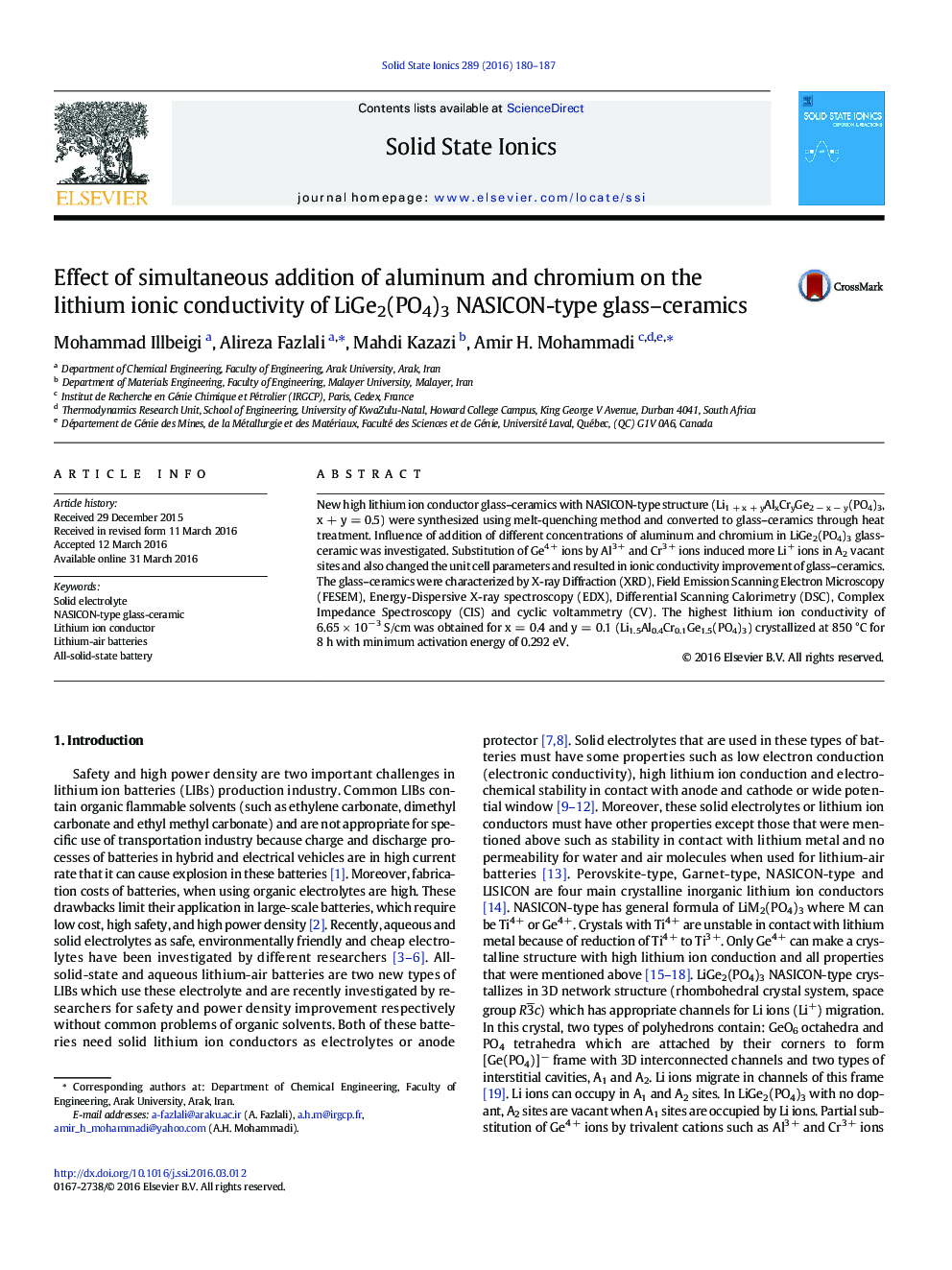| Article ID | Journal | Published Year | Pages | File Type |
|---|---|---|---|---|
| 1296167 | Solid State Ionics | 2016 | 8 Pages |
•High lithium ion conductor glass–ceramics with NASICON-type structure were synthesized.•Addition of different concentrations of aluminum and chromium in LiGe2(PO4)3 glass-ceramic was investigated.•Substitution of Ge4 + ions by Al3 + and Cr3 + ions induced more Li+ ions in A2 vacant sites.•It also changed the unit cell parameters and resulted in ionic conductivity improvement of glass–ceramics.•The glass–ceramics were characterized by XRD, FESEM, EDX, DSC and CIS.
New high lithium ion conductor glass–ceramics with NASICON-type structure (Li1 + x + yAlxCryGe2 − x − y(PO4)3, x + y = 0.5) were synthesized using melt-quenching method and converted to glass–ceramics through heat treatment. Influence of addition of different concentrations of aluminum and chromium in LiGe2(PO4)3 glass-ceramic was investigated. Substitution of Ge4 + ions by Al3 + and Cr3 + ions induced more Li+ ions in A2 vacant sites and also changed the unit cell parameters and resulted in ionic conductivity improvement of glass–ceramics. The glass–ceramics were characterized by X-ray Diffraction (XRD), Field Emission Scanning Electron Microscopy (FESEM), Energy-Dispersive X-ray spectroscopy (EDX), Differential Scanning Calorimetry (DSC), Complex Impedance Spectroscopy (CIS) and cyclic voltammetry (CV). The highest lithium ion conductivity of 6.65 × 10− 3 S/cm was obtained for x = 0.4 and y = 0.1 (Li1.5Al0.4Cr0.1Ge1.5(PO4)3) crystallized at 850 °C for 8 h with minimum activation energy of 0.292 eV.
